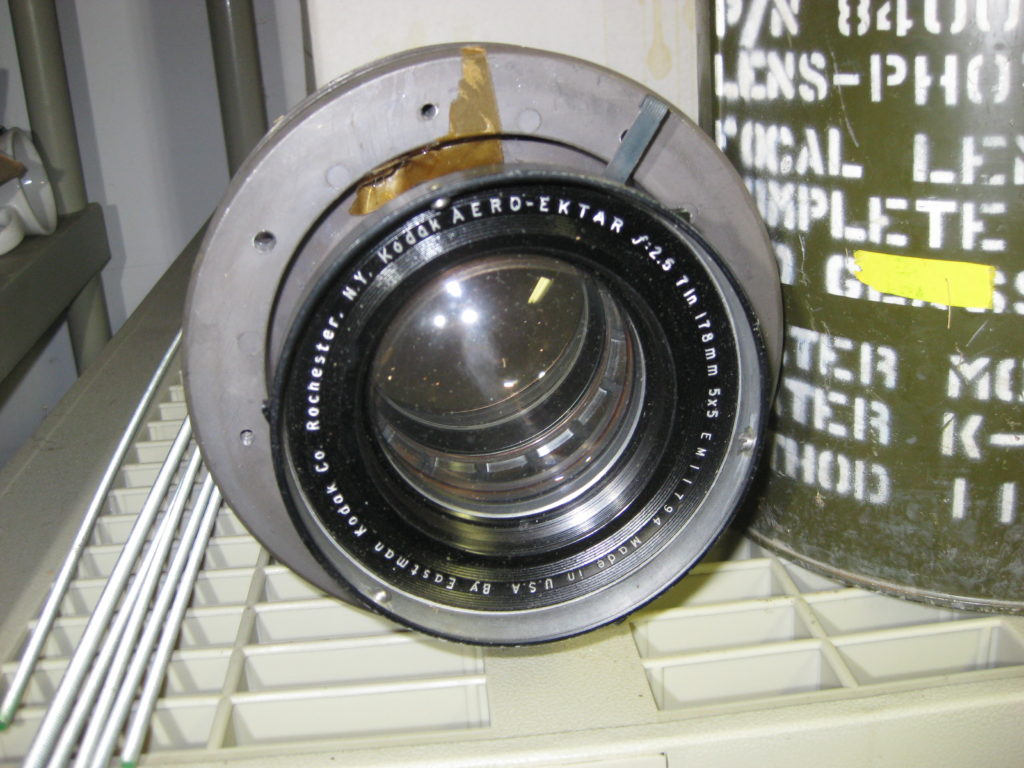It’s not uncommon for me to find unusual, nerdy objects while cleaning or organizing. I’m a bit of an eclectic pack rat, and have all sorts of weird objects, and some I literally have placed on shelves and forgotten about. Since I am trying to tidy up my garage work area, I’ve been finding objects wich I haven’t seen in quite a while, and I thought that I would share some of them with you. Perhaps this will become a new feature on my blog.
Today’s found item is a Kodak Aero-Ektar lens. I snapped a couple of quick pictures:


The Aero-Ektar was one of Kodak’s crown jewels in lens design, and was covered by a 1941 Patent by George Aklin, which gives a lot of details about its design.
Several versions of this lens were made, including a 12″ focal length. This one is the most common design, the 7″ focal length with a weight of around 3.2 pounds. It’s quite a chunky piece of glass. They were originally designed for aerial reconnaissance. I was trying to find a serial number on mine, but other than a few hand scratched numbers on the lens, was not able to find mine. I found Michael Briggs’ site which proved to be pretty interesting and informative. Most notably, it pointed to the fact that these lenses included the use of thoriated glass (glass that includes Thorium) and thus they are radioactive. Apparently it is common for such lenses to darken to a brownish color over time, and shining a bright light back through this lens does show that at least one of the inner elements shows the telltale faint brown color.
I guess I will be storing this in a can in the far side of the garage. I’m not especially concerned for all the reasons mentioned on Briggs’ site, but neither am I going to stash it underneath my pillow.
I don’t have any gear to actually measure any of the radiation coming from this gadget. If any of my hacker/geek friends do, and happen to be in the area please let me know: I’d love to have the lens measured.
I’ve no real plans for this. I offered it to a colleague who does a lot of interesting camera work, but (naturally) he already has one. They apparently bring a fairly good price on Ebay, so I could convert this one into additional monies for other projects. But it is an interesting artifact, and adapting it for a home made camera could be interesting, and would give a lot better images than my previous foamcore camera attempts. Anybody have any ideas? Any lens hackers interested in having this interesting bit of optical history?
Stay tuned for another episode of Found Item.
Addendum: I was an idiot, the serial number is right on the front: EM11794. The EM code means the lens was manufactured in 1943.